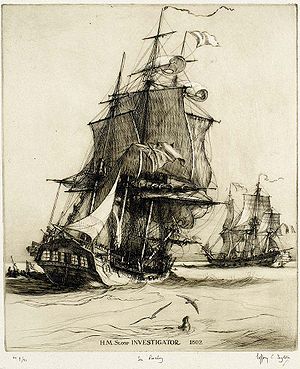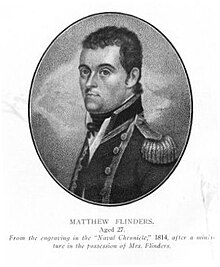 20th-century drawing of HMS Investigator.
| |
| History | |
|---|---|
| Name | Fram |
| Builder | Unknown, at Monkwearmouth, Sunderland[1] |
| Launched | 1795[1] |
| Fate | Sold 1798 |
| Notes | Collier |
| Name | HMS Xenophon |
| Acquired | 1798[2] |
| Renamed | HMS Investigator (1801)[3] |
| Fate | Sold 1810 |
| Name | Xenophon |
| Acquired | 1810 by purchase |
| Fate | Broken up about 1872[4] |
| General characteristics [5] | |
| Tons burthen | |
| Length |
|
| Beam |
|
| Draught | 15 ft (4.6 m) |
| Depth of hold |
|
| Propulsion | Sails |
| Sail plan | Sloop |
| Complement | 80 |
| Armament |
|

HMS Investigator was the mercantile Fram, launched in 1795, which the Royal Navy purchased in 1798 and renamed HMS Xenophon, and then in 1801 converted to a survey ship under the name HMS Investigator. In 1802, under the command of Matthew Flinders, she was the first ship to circumnavigate Australia. The Navy sold her in 1810 and she returned to mercantile service under the name Xenophon. She was probably broken up c.1872.
- ^ a b Essay: Flinders and the voyage of the Investigator 1801–1803, The Flinders papers
- ^ [1], The Flinders papers
- ^ [2], The Flinders papers
- ^ a b c d e Register of British Ships, Melbourne
- ^ Winfield (2008), p. 269.
- ^ Cite error: The named reference
LR1840was invoked but never defined (see the help page). - ^ Australia Circumnavigated The Hakluyt Society (2015), p.115.